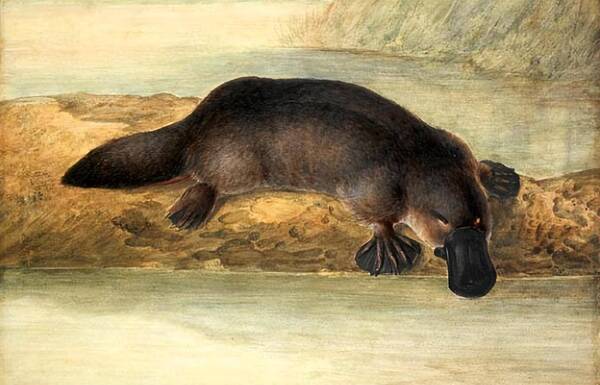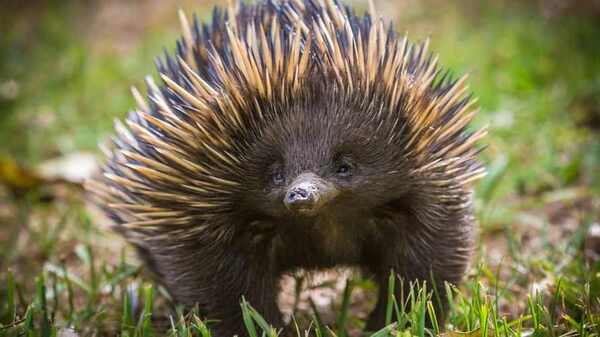When we think of mammals, we usually think of viviparous animals like dogs, cats, monkeys, and humans. Most mammals reproduce by giving birth to their offspring, which means their young develop inside the mother's body and are not separated from her until after birth. However, there is a group of mammals that breaks this rule and reproduces by laying eggs. These unique animals are called "monotremes"。
Monotremes are the most primitive and ancient group of mammals, and they retain some features similar to reptiles, especially the fact that they reproduce by laying eggs rather than giving birth to live young. Monotremes have all the key features of mammals, such as being warm-blooded, hairy, and lactating, but they reproduce by laying eggs, which makes them a unique branch of evolution.
Monotremes get their name from the fact that they have only one common body opening, called the cloaca, which is used for excretion, mating, and reproduction. Unlike most mammals, monotremes reproduce through this single opening.
Currently known monotremes include the following two categories: platypusandEchidna。

scientific name:Ornithorhynchus anatinus
The platypus is one of the best-known monotremes, living in freshwater rivers, lakes and swamps in eastern Australia. They have a very distinctive appearance, with a flat duck-like beak on their head, a body covered with thick waterproof hair, and webbed limbs for swimming in the water.
Spawning characteristics :
Female duck bill
The eggs laid by the platypus are softer than those of birds. Similar to the eggs of reptiles, the shell is relatively soft and has a certain degree of elasticity.
The female platypus will incubate the eggs in a safe nest for about 10 days. During the incubation period, the female platypus warms the eggs with her body to keep them at a constant temperature.
Breastfeeding method :
Unlike other mammals, platypuses do not have nipples. Instead, they secrete milk through the skin of their abdomens, which seeps into their fur. The young lick their mother's fur to get nutrition.
Platypus pups are very vulnerable after hatching, and the mother will take care of them in the nest until they are able to fend for themselves.
Other unique features :
The platypus is one of the few venomous mammals. The male platypus has poisonous thorns on its hind legs, which can be used to protect territory or fight during the mating season.

Echidnas, also known as anteaters, are another type of egg-laying mammal. They are similar in appearance to hedgehogs, covered with hard, thorny hairs, and are mainly found in Australia and New Guinea. Echidnas are insectivorous animals that feed mainly on ants and termites.
Spawning characteristics:
After mating, the female echidna lays a single egg, which she stores in a makeshift pouch on her abdomen (similar to a kangaroo's pouch).
Echidnas lay very small eggs with soft shells, and the young inside the eggs usually begin to hatch 10 days after they are laid.
Breastfeeding method :
Like the platypus, the echidna has no nipples. The female echidna secretes milk through the mammary glands, and the young obtain nutrition by sucking the milk that leaks out of the mammary glands in the pouch.
The puppies grow in the pouch for about 7 weeks until they develop spines and begin to leave their mother's pouch.
Other unique features :
The echidna's mouth is very long and thin, with sensitive touch receptors that help it find things in the mud or bark.
They are very cold-resistant animals, especially in winter, when they hibernate briefly to save energy.
The uniqueness of monotremes lies in their evolutionary position between reptiles and other mammals. They retain the egg-laying characteristics similar to reptiles, but also have typical mammalian characteristics such as lactation, homeothermy and hair. Scientists believe that these characteristics of monotremes are relics of the early evolution of mammals, and they represent the early development stage of mammals.
Research shows that monotremes diverged from the common ancestor of other mammals about 160 million years ago. This means that monotremes have existed since the age of dinosaurs and have adapted to the ecological environment of the time through evolution. Although they are now only distributed in a few areas of Australia and New Guinea, their existence provides us with valuable information about the evolution of mammals.
Due to their unique evolutionary status and biological characteristics, monotremes face certain threats. The impact of human activities, such as habitat destruction, pollution and climate change, are threatening the survival of these rare species. Especially for platypuses, changes in water quality in their habitats, agricultural development and other factors have posed a major challenge to their survival.
To protect these unique animals, governments and environmental organizations in Australia and New Guinea have taken a number of measures, including setting up nature reserves, restoring habitats, and conducting species monitoring and protection programs. In addition, scientists around the world are also working hard to study their living habits and reproduction methods in order to better protect and manage these precious species.
Although egg-laying is extremely rare among mammals, monotremes, such as the platypus and echidna, demonstrate a unique evolutionary path among mammals. They not only retain the egg-laying characteristics of reptiles, but also possess other key features of mammals, such as lactation and homeothermy. The existence of these animals reminds us that evolution is a diverse process that can produce a rich variety of life forms and reproductive strategies. At a time when global biodiversity is under threat, protecting these rare species is not only a responsibility to nature, but also a way for us to further understand the history of life on Earth and the mysteries of evolution.
We created this article in conjunction with AI technology, then made sure it was fact-checked and edited by a Animals Top editor.